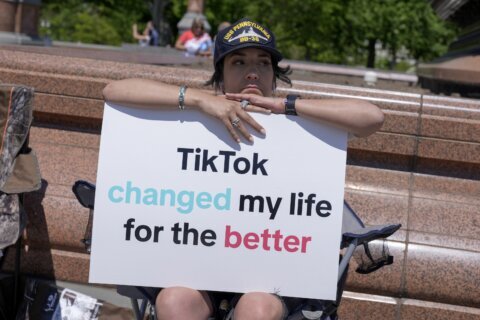Social media celebs advertising products to their followers — also known as influencer marketing — has been on the rise the last several years. From 2016 to 2022, the market grew from $1.7 billion to a whopping $16.4 billion, according to Influencer MarketingHub.
This tactic works: The hashtag “TikTokMadeMeBuyIt” has more than 46 billion views at the time of writing. Whether you’re looking for a new eye cream, the latest workout gear or even the best vacation spot, it’s becoming more common to make purchase decisions based on recommendations from your social media feeds.
‘Deinfluencing’ Is Countering the Wave
Countering this wave of often impulsive purchases is the recent deinfluencing trend: Content creators talk about products that you shouldn’t buy. While it isn’t as popular as TikTokMadeMeBuyIt, the deinfluencing hashtag has taken the app by storm with more than 360 million views at the time of writing.
What does this actually mean for the average consumer? Will this new trend of deinfluencing actually do anything to counter high spending rates we see from influencer marketing?
Probably not, according to experts, but there are some strategies you can incorporate in your life to help you make conscious purchase decisions and reduce overspending.
[How to Improve Your Social Media Presence for College Admissions]
What is Deinfluencing and Is It Legitimate?
Deinfluencing describes when content creators on apps like TikTok and Instagram promote reducing clutter and unnecessary purchases — and they often discuss why an highly rated product isn’t worth the money.
“For influencers who are promoting minimalism for the purpose of decreasing consumption and improving the financial health of their audience, the deinfluencing trend is the latest iteration of promoting frugality and financial responsibility,” Dr. Brad Klontz, certified financial planner and financial psychologist, says.
On the surface, this seems like a good thing. Advice not to buy something you don’t need should have a positive impact on viewers’ budgets.
[READ: 10 Simple and Free Budgeting Tools.]
But in reality, many influencers use deinfluencing videos as an opportunity to plug an alternative product for the one they’re criticizing.
“For influencers who are disparaging one product in favor of another it could be just a sales tactic,” Klontz says. “Influencers may also be mentioning a specific brand to try to position themselves to get a brand deal in the future.”
How Apps Like TikTok Have Affected Impulse Purchases
It’s clear from how much companies are investing in influencer marketing that promoting products via social media influencers has the desired effect.
According to Klontz, there’s a psychological explanation for this phenomenon.
“When influencers suggest products, it can have significant influence on buying behaviors due to the parasocial interaction, where followers feel like they are engaged in a reciprocal relationship with the influencer, even though the relationship is unidirectional,” he says.
With TikTok videos allowing viewers a glimpse into the personal lives of the people behind the camera, it’s easier for influencers to create this relationship and sense of community.
Influencing Is Nothing New
Bobbi Rebell, CFP, chief executive office and founder of Financial Wellness Strategies, says that influencing is nothing new; traditional ads have been doing it for decades. But apps like TikTok allow people to develop a much more personal connection with their followers.
“It’s a more personal influence and much more effective,” Rebell says. “The trust is already built in. Buying the item makes us feel like we are like them and part of the community. It can give us a feeling of belonging and being part of something bigger than ourselves.”
Advances like Amazon storefronts have enabled influencers to position products just a few clicks away from their followers, reducing the amount of time they have to spend researching something before they buy it. This encourages quick buys and impulse spending.
Paige Pritchard, spending coach known by her username @overcoming_overspending on TikTok, says, “Everything you see is only a click away, and you’re able to create a carbon copy of someone’s life by accessing their Amazon storefront or LTK (formerly LIKEtoKNOW.it) page.”
“In addition, social media promotes certain mindsets around our consumption habits that we start to think are normal. Things like always needing the newest and latest item, giving into instant gratification and the idea that the more you have the happier you will be,” she adds.
Is Deinfluencing Encouraging or Discouraging Impulse Buys?
It’s clear that making impulse purchases based on product recommendations from influencers is a problem fortified by TikTok, but will the deinfluencing trend actually do anything to fix it?
In some ways, deinfluencing can reduce overspending, Rebell says.
“If it serves as an alternative to the popular ‘haul’ videos, that may benefit people. There’s something to be said for allowing people to see that they are not alone in either not being able to afford or not wanting to spend money on more stuff,” she says.
But in general, experts agree that for the most part these deinfluencing videos don’t actually want to stop viewers from spending.
Pritchard says that since most of the deinfluencing videos show the person suggesting an alternative product to what they don’t like, it’s just influencing under a different lens — and many women in her community said these videos actually influence them to spend money and make impulse purchases more than they deinfluence them.
Tips for Making Conscious Purchase Decisions
If you find yourself regularly making impulse purchases based on social media recommendations, it could be because this marketing strategy is specifically designed to play on emotional responses.
Still, those trying to tighten their budgets might want to consider adopting conscious purchase strategies rather than scrolling the deinfluencing hashtag.
The first tip experts agree on is to pause before you make a purchase.
“Many of these buying decisions are impulsive and driven by emotions,” Klontz says. “To counteract this influence, it can help to put some time between the impulse to buy and buying. For example, you could simply wait until tomorrow. Oftentimes the urge to buy has passed by then.”
Rebell recommends saving the post and stepping away for at least 48 hours. If you still want the product then, you have it handy but this practice makes you think more carefully before checking out.
[Read: Inside the Psychology of Overspending and How to Stop.]
Pritchard recommends rethinking what deinfluencing means.
“To me, deinfluencing really means being inspired by what you see on social media rather than being influenced. You can see someone on social media that you admire, and you can gain inspiration from something they’ve created in their life (whether that’s health, wealth, relationships, etc.) and ask yourself, ‘How can I create something similar in my life that feels authentic to me and the life I’m living?'”, she says.
“Inspiration is first looking inward to inform our decisions and purchases, whereas influencing is basing our purchasing decisions more on external voices and recommendations,” she adds.
Rather than purchase the exact products you see your favorite TikTok influencers touting, consider what it is about that product that makes you want it — and see if there’s another way you could achieve the same result without dropping your hard-earned cash.
[See: Money Moves You Will Be Thankful For.]
Pritchard also advises all frequent impulse shoppers to spend some time thinking about their shopping triggers.
She recommends spending some time thinking about past instances of making impulse purchases and ask yourself why you shop, when you shop (on your lunch break, at night after work, on the weekends) and how you shop (online, in person).
Next, she says, determine if there’s a certain emotional state that you’re in when you shop (bored, sad, anxious, insecure. etc.) and why you buy what you do (for example, there might be certain categories of products you’re buying like makeup, clothes, books, etc.).
Then, you can create boundaries to help you avoid those triggers, like making a no–shopping rule after a certain time of night — or if you’ve consumed any alcohol.
Final Thoughts
Many of us buy products because someone we follow on social media recommends them — and that doesn’t always have to be a bad thing. But if you find yourself making impulse purchases on a regular basis, consider if you actually need those items.
While the TikTok deinfluencing trend is probably not going to stop you from spending your money, there are strategies you can use to deinfluence yourself.
More from U.S. News
12 Best Discount Shopping Apps
Best Budget Apps for Couples in 2023
Will the TikTok ?Deinfluencing? Trend Actually Help You Spend Less? originally appeared on usnews.com







